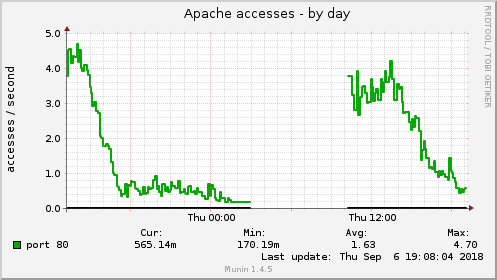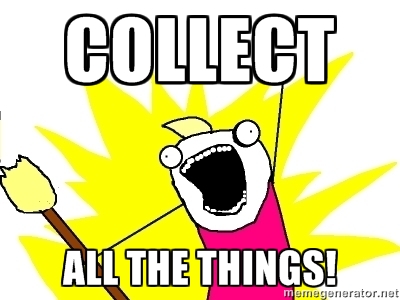Software and services to power your Amazon business.
I’ve been selling on Amazon since 2014 and over the years the strategies, services and tools I used have evolved just as much as the Amazon landscape has evolved.
There are now suites of tools dedicated to solving specific problems faced by Amazon sellers but as my business has expanded, becoming more of a business than simply a form of search engine manipulation, my needs have grown
My operational infrastructure and team has scaled to meet the demands of selling across 7 different Amazon marketplaces, allowing me to free up time to train for a Spartan Race and to expand our product range again, whilst also hitting record days in what is traditionally a slow quarter for E-commerce.
Whilst I firmly believe the core of our success is our philosophy of only launching products that genuinely help people and trying to be the best out there, our ability to scale across so many marketplaces and SKUs is undeniably down to the software infrastructure, services and team that the entire business operates on.
So I wanted to share the tools and services we use to say thank you to them for helping us so much.
I didn’t start out using all these products and services, new and smaller Amazon sellers might not need half of them, and whether they are the best is often subjective, but they are all what we are using right now to operate our business.
Operations
The day to day operations require tools that work, all the time, every time and our decisions reflect that
Google G Suite – Productivity & Collaboration
I want to think about my business, not whether our emails are getting through. We use Google’s G Suite for email, documentation, calendar and hangouts. It just works and is ubiquitous. Very little on-boarding needs to be done with new hires and it’s easy to secure and configure. Amongst other documents, all our translations are stored as Google Sheets allowing for effortless collaboration.
Upwork – Hiring
We have a core team of full time staff members, some core contractors who work for us on an ad-hoc basis, e.g. translators, and then there are the specialists we hire just to solve a single problem. We’ve been using Upwork since it was called ODesk and whilst it has had problems it’s also proven invaluable in finding good talent fast, as long as you know how to create good job descriptions and find the talent yourself. I’ve never hired someone who’s applied to a job post, I’ve always headhunted talent looking for a position.
Asana – Project Management
All our project management is done in Asana, helping us stay focused on what the important tasks are and who is responsible for them. With a distributed team communication is key and being able to assign tasks, track responsibilities and work in progress whilst receiving real time notifications throughout a task lifecycle helps all of us keep each other on track.
Dropbox – Distributed File Store
Whilst we store Google Documents in Google Drive, we use Dropbox for all our business and project assets, e.g. labels, brand assets and purchase orders records. Google Docs are great to collaborate on in a web browser, but Google Drive doesn’t let you sync a business and personal account locally, Dropbox does, and setting all our staff up with their own company Dropbox accounts is really easy, as is sharing files.
Grasshopper – Global Phone Numbers
We use Grasshopper for our customer service numbers, allowing us to give customers in the US a toll free number to dial! It provides a useful desktop application for taking calls from a laptop and will send voicemails as emails for out of hours calls.
Help Scout – Email Help Desk
We’ve integrated Help Scout in to both Amazon and our WooCommerce platforms, allowing us to handle help desk customer service as a team. Having a decentralised customer service team, working together across timezones, is probably the biggest thing that’s let us scale as a business. No more missed support tickets, just happy customers.
Slack – Real Time Collaboration
All of our team uses Slack for real time collaboration (posh for chat) allowing us to communicate, share resources, discuss work and get things done. It’s responsive, easy to create secure channels, the design team don’t need to be involved in inventory discussions, and a searchable chat and asset history has proven itself time and time again.
Standuply – Scrum Manager
We’ve integrated Standuply with Slack for Scrum management. This is as much for the good of the team as it is for me to keep track of what I’m doing. Standuply is triggered to ask each of us 3 simple questions each morning as we start work:
- What did you do yesterday?
- What are you doing today?
- Are there any obstacles?
This makes it easy for all of us to keep track of what we’re doing and what everyone else is doing.
WorldFirst – International Banking
We buy and sell products and services all over the world in 4 different currencies. Working with WorldFirst gives us much more competitive ForEx rates and much lower fees for currency conversions and international wire transfers, this has substantially improved our profit margin compared to our normal business banking solution.
Amazon & Logistics
DHL – International Shipping
We ship, a lot, globally. You’ve probably heard of DHL, they are the one with out the arrow in their name 😉 Samples from China, signed letters to our bank, inventory from factories to warehouse, we do a lot of it with DHL.
SentryKit – Amazon Listings Health Check
With so many products across so many marketplaces, keeping track of their health means checking the Amazon listings daily, the perfect task for a SaaS! SentryKit scans all our listings across all marketplaces and produces a daily report of any issues that need to be tackled. Experienced sellers will know that even if you do everything right the Amazon systems aren’t perfect and SentryKit gives us the piece of mind that we’ll know when an incident does happen to one of our listings!
Deliver Plus – International Delivery
We use Deliver Plus to get better rates for international shipments to the UK. They have large accounts with DHL and UPS which gets them bigger savings than are available to us by ourselves.
Feedback Genius
https://www.sellerlabs.com/feedback-genius/
Seller Labs’ Feedback Genius is an enterprise level auto-responder allowing us to reach out to our Amazon customers to provide automated, after sales care. This after sales support helps our customers love our products and our brand just a little bit more and if our customers are happy, I’m happy!
Marketing
Shutterstock
We do a lot of content marketing, blog posts, banners, adverts, etc. and need to find licensable, quality images that are fit for purpose. Shutterstock has a MASSIVE online database of licensable images so we simply have a subscription with them that covers our needs
WP Engine
We used to run our e-commerce and marketing platform on Shopify, but after spiralling development costs and no SEO footprint we switched to WordPress and WooCommerce and quadrupled our traffic and sales overnight. Whilst I love hosting infrastructure I wanted to work more ON the business rather than IN the business so moved our platform to WP Engine. Due to the way I architected the platform we have a contracted WordPress administrator who does about 2-3 hours of work a month across 7 different sites. It’s a really elegant solution for building any sales and marketing platform.
Mailchimp – Email Marketing
Mailchimp is my favourite email marketing platform. As we have so many products selling in so many different countries and languages it’s important to have a simple solution that lets us collect email addresses across all our platforms, tag them appropriately and let us automate mail outs to our different customer segments. Mailchimp does it perfectly and with a really beautiful user interface that keeps things simple (stupid)!
Accounting
Xero – Online Accounting Software
We used to use an accountant that had their own bespoke online accountancy platform but switched to a different accountant as our bank accounts and number of currencies we handled increased to a point their system couldn’t handle. Now we use Xero I can’t recommend it enough. Our first accountant’s bespoke platform seemed an easy option to start with but we suffered from vendor lock-in and high priced, specialist, book-keepers. Xero is familiar to all good accountants and book-keepers so you can change service providers with out changing accountancy software.
A2X – Amazon Marketplace Accounting
A2X exports all our Amazon transactions in to Xero, simplifying the work our book-keeper needs to do and helping make sure that everything is accounted for. It saves a lot of time and money and is extremely reliable.
Avask – European VAT
Because we sell so much in so many European countries, we need to be VAT registered due to EU law. Avask Accounting & Business Consultants have helped us get VAT registered across the EU as well as handle all our accounting and help us to make the VAT payments.
Compliance
Ashbury Labeling – Product And Labelling Regulations
https://www.ashburylabelling.co.uk
One of my brands is a vitamin supplement brand which is heavily regulated in the EU. Working with Ashbury gives us peace of mind, knowing that all our product ingredients and formula are legally approved for sale in the EU and that our labelling and marketing practices are also compliant with no misleading health claims. In the USA we sell Probiotics, in Europe it’s Live Cultures!
Di Renzo – Italian Regulatory Affairs
All supplements warehoused and sold in Italy need registration with the Italian Ministry of Health and we’ve been working with Di Renzo to communicate with the Italian government and get all our products approved as Italy is one of our largest markets. The business has grown from an Amazon business to one of legalise and compliance!
Natural Products Consulting Corp – Canadian Regulatory Affairs
Canada also require all supplements to be registered with the Canada Health organisation and assigned a Natural Product Number (NPN). NPC Corp handled all the hard work for us, helping us register our products and sell them in Canada.
Podcasts
The Amazing Seller
I’ve been listening to Scott Voelker’s The Amazing Seller podcast from the start, when it was just Scott and his dog! He helps keep me in the loop with what’s going on in the Amazon ecosystem and is another tool in my toolbox to help me keep current and on top of things.
I was inspired to create this post after paying my corporation tax and going over the accounts of the last 12 months and seeing all the services we’ve leveraged to build the business and get to where we are today.
We’ve dabbled with lots of tools not mentioned over the years which have fallen by the wayside but this is a pretty concise list of all the products and services we are using at the moment as the platform for our business.
I’m curious to hear from others.
What’s in your Amazon seller stack?
Over the course of the last 12 months, what has been your most consistent present problem?












 Recently I built some new infrastructure and started to see messages like this in my
Recently I built some new infrastructure and started to see messages like this in my